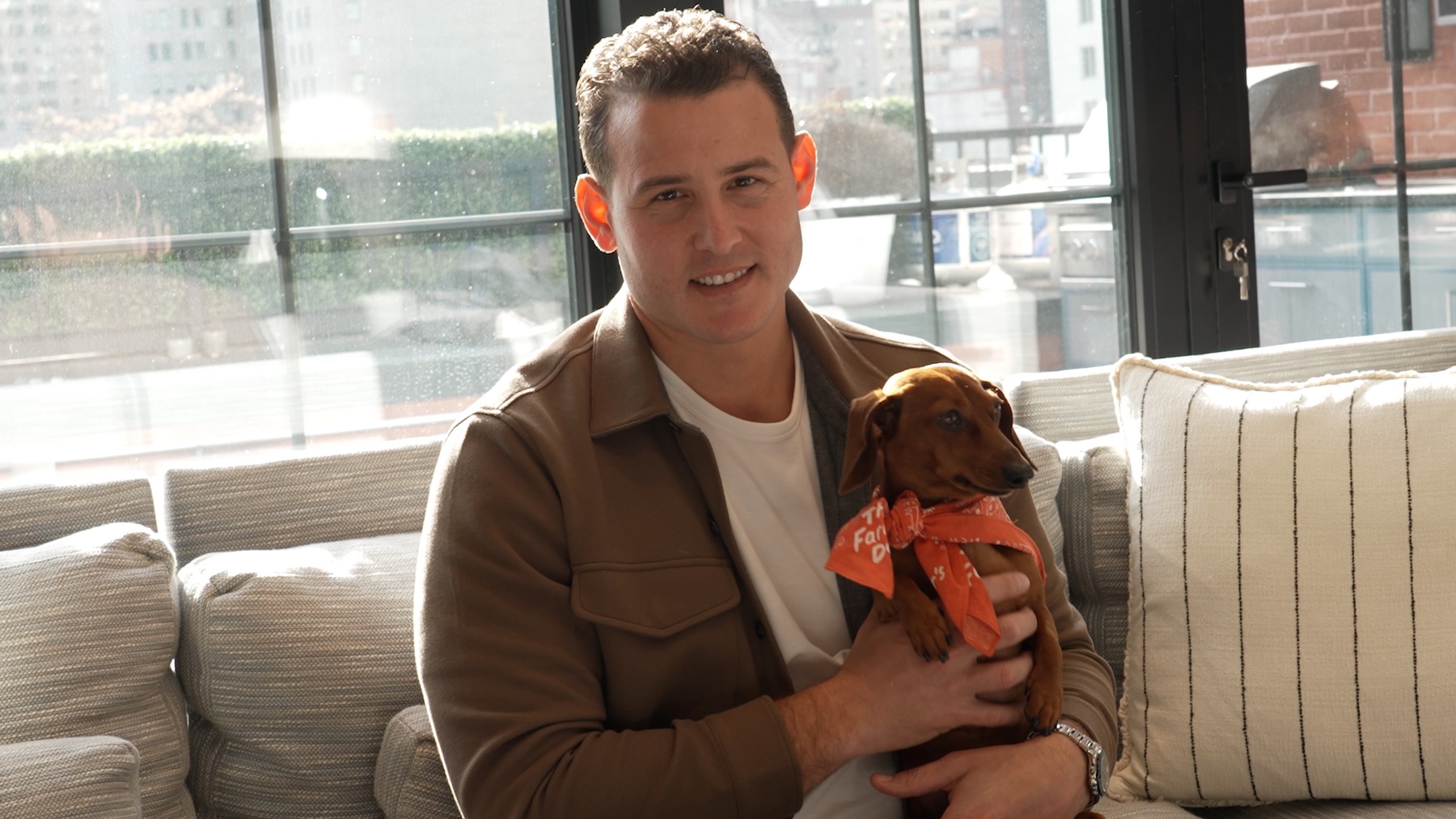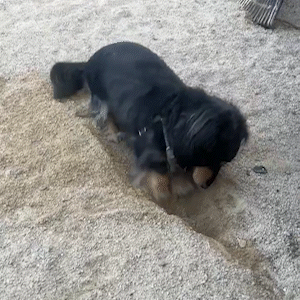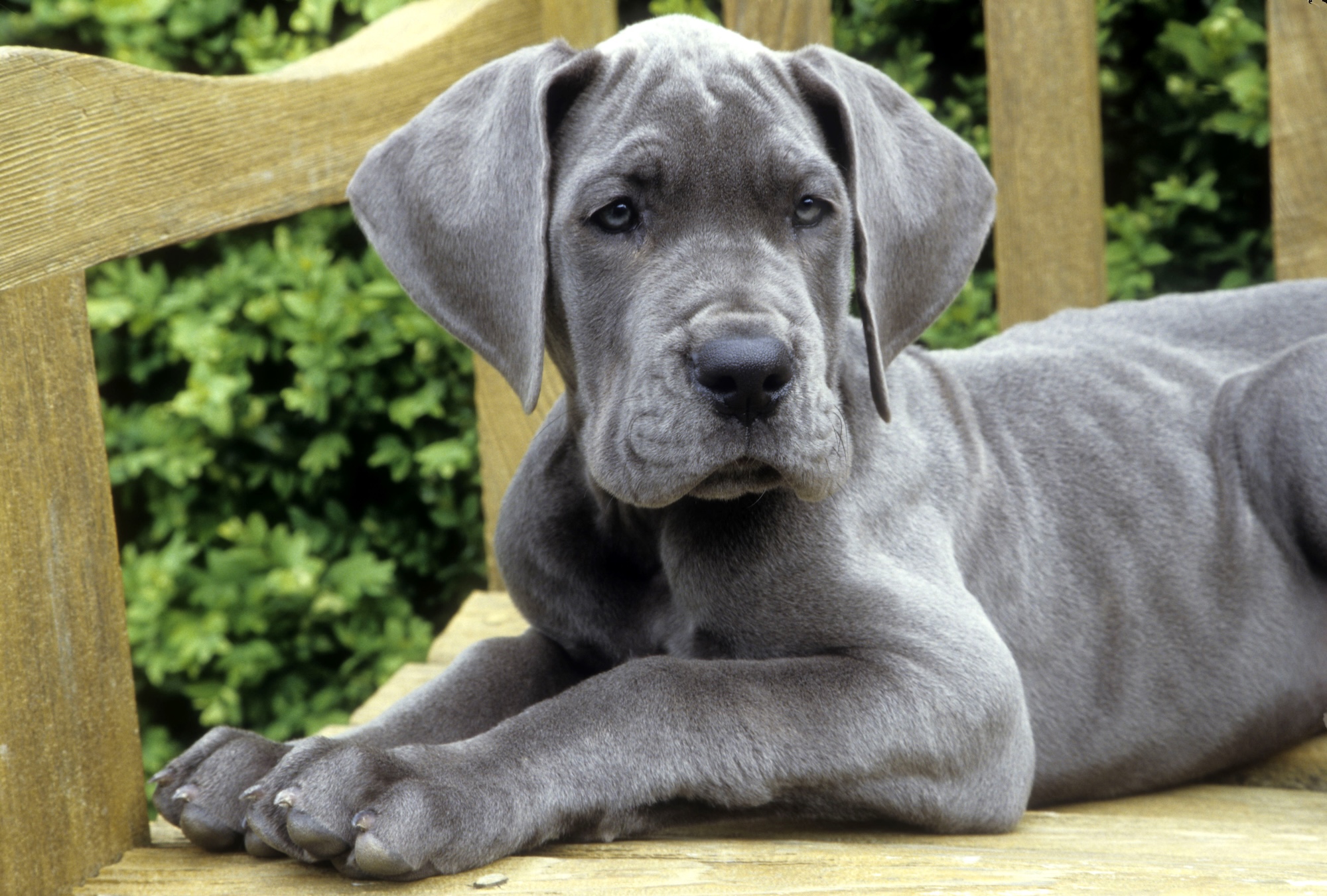Dressed up in black-and-white polka dots, Dalmatians are one of the world’s most recognizable breeds. But these dogs are so much more than their elegant spots. They’re energetic, people-loving pups that can make great companions with the right exercise, training, and care.
“Be prepared to be loved,” says Laurie Isaacson, Dalmatian Club of America’s rescue committee member, about what to expect when you bring a Dalmatian into your life. “They’re just very loving dogs.”
We’ve put together some tips that can help you decide whether to bring one of these athletic dogs home—or take better care of the one you already have.
Dalmatian history
The Dalmatian’s origins are not as well-understood as some other breeds. Rather, much of the breed’s journey has been pieced together with a game of spot the spots in historical works of art. For example, there are dogs with black-and-white spotted coats painted on ancient Egyptian artifacts and in Greek frescoes. In Croatia, paintings of spotted dogs dating back to the early 1600s hang above the altar in a few local churches. Whether these depictions of dotted dogs are the ancestors of the Dals we know today is debatable, but written works have still more clues.
It’s believed that Dalmatians were first described in writing in the 1719 work of a Croatian bishop named Petar Bakic. He called them by the Latin honorific “Canis Dalmaticus.” Over in England, Thomas Pennant defined the Dalmatian as “a beautiful spotted kind” of dog in his 1771 Synopsis of Quadrupeds. 19 years later, Thomas Bewick did Pennant one better and depicted the Dalmatian in his book of engravings, A General History of Quadrupeds.
The origin of the breed’s name is even in dispute. Some hypothesize that these were the dogs that traveled with the itinerant Romani people in Dalmatia, a region of modern-day Croatia. Others theorize that the name was once a combination “dama,” the Latin word for fallow deer, and “chien,” the French word for dog. In the latter theory, the name acquired both the “l” and its Anglo spelling over time.
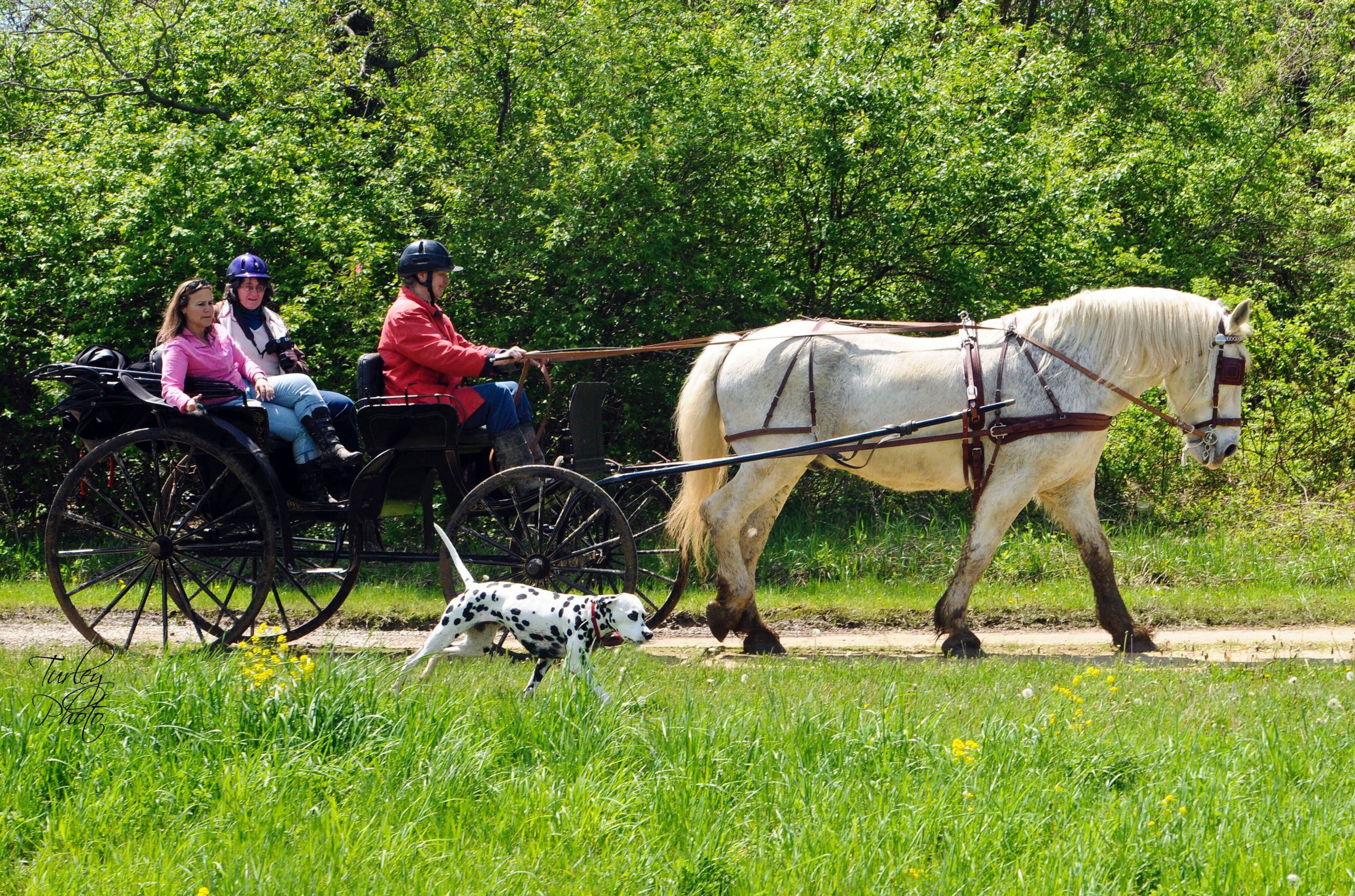
What we do know is that the Dalmatian as we know it today became especially trendy in England during the Regency era from 1811 to 1820. Members of the nobility would raise these dogs to guard carriages and horses. The traits that we still consider typical of Dalmatians are what made them the dog for the job over 200 years ago: their cool demeanor, instinct to protect, comfort with horses, loyalty to their humans, and dedication to their duties. At the time, they were often referred to by the more straightforward name, “Spotted Coach Dog.” (Also: “English Coach Dog,” “Carriage Dog,” and, for the more dessert-driven nickname-ers, “Plum Pudding Dog.”)
In more recent history, Dalmatians have been the canine face of fire departments. Before fire trucks existed, horse-drawn carriages delivered firefighters to burning buildings. Dalmatians were the natural choice for escort thanks to their experience protecting coaches and horses. The breed remained in firehouses as mascots when the practice of firefighting graduated from horses-drawn carriages to engine-powered trucks.
It’s impossible to talk about the history of Dalmatians without mentioning Disney’s classic 101 Dalmatians. The children’s cartoon tells the tale of two Dalmatians who must save their puppies from Cruella De Vil, a fashion-obsessed woman who wants their hides for coats. Though Dalmatians remained steadily popular in America after the film first premiered in 1961, they enjoyed an enormous surge in adoptions after Disney re-released 101 Dalmatians in theaters in 1985. Tens of thousands more Dalmatian puppies than usual were registered over the next eight years in the U.S. Popularity peaked in 1993, before dropping off a cliff over the next decade.
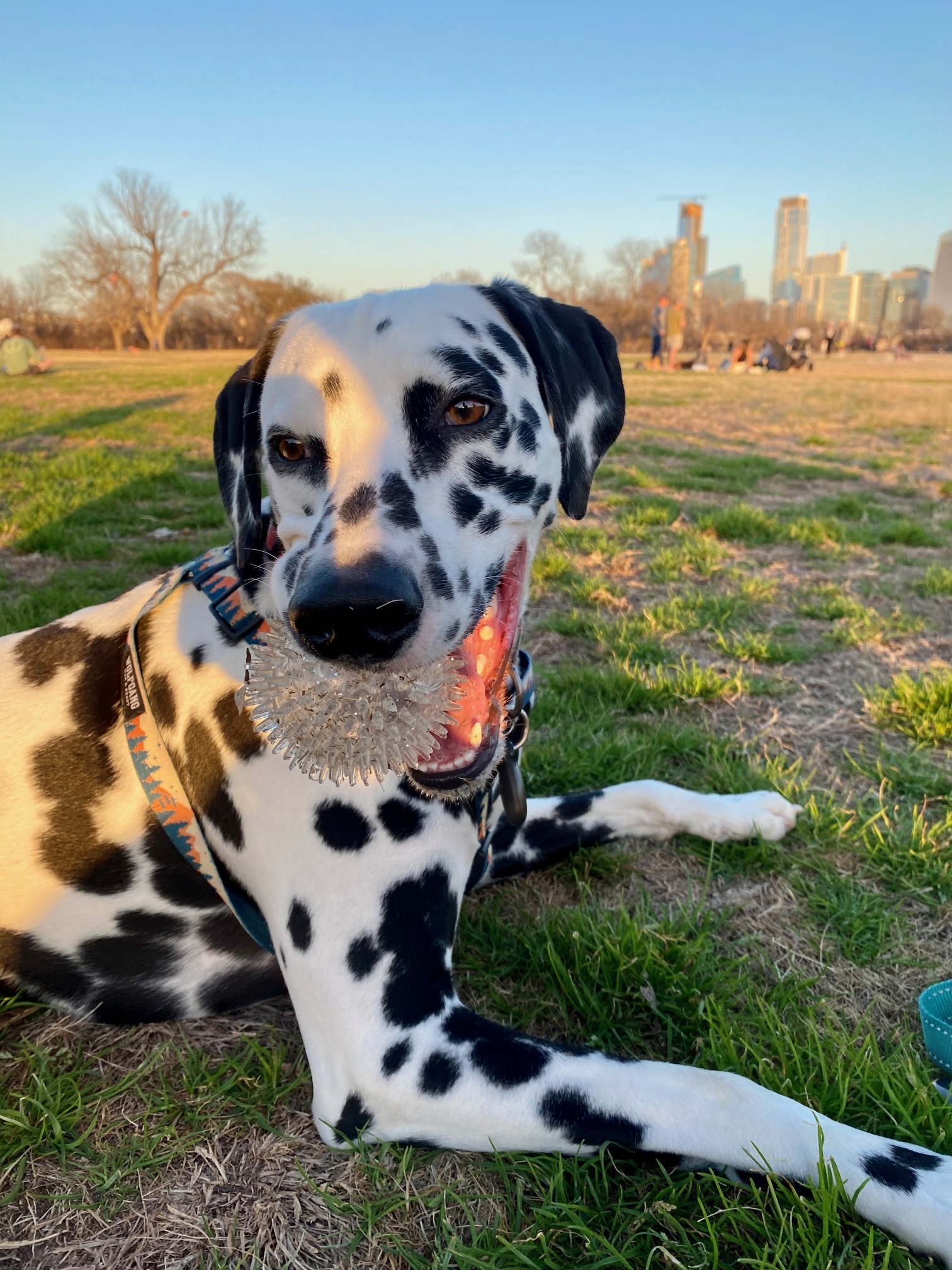
Even the 1996 live-action remake starring Glenn Close was not enough to turn around the downward trend from its previous highs. Prior to the premier of the 1996 movie, an animal rights group looking to preempt a surge in popularity—and the simultaneous increase in the population of these dogs in shelters—released a PSA warning people of the amount of time and care that Dals need. It didn’t work. Shelters filled up anyway. Dals steadily dropped in popularity in the following years. When the 1996 film premiered, they were the 15th most popular breed out of 200 breeds, according to the American Kennel Club. Ten years later they were the 86th most popular. They’ve since climbed back closer to their mid-century level of popularity, however. As of 2023, the A.K.C. listed Dalmatians as the 47th most popular breed in the U.S.
Basic facts about Dalmatians
The first thing you notice about Dalmatians is that striking spotted coat, which can be black, liver-colored, or, in very rare cases, lemon-colored. But, no matter their coloring, they’re born with no spots at all and may not fully develop their markings until a year old. Likewise, over time, Dalmatians may develop ticking, which appears as smaller, faded spots. In fact, these “spots” are a mix of pigmented and gray hairs that develop over time according to the dog’s genetics. Ticking can come in as these dogs age, and occasionally not all—similar to how humans go gray at different rates.
The second thing you notice about Dalmatians may be their muscular but sporty build. They’re considered medium to large dogs that weigh anywhere between 33 pounds for a small female and 71 pounds for a large male, and they can reach 19 and 23 inches tall at the shoulder, according to the AKC.
Isaacson explains that their height was a specific trait that Dalmatian breeders of yore valued because it helped the dogs carry out their carriage-guarding duties seamlessly. “Under 23 inches [tall] was preferred so they could go side to side under the wagons or under the hitches where the horses are,” she says.
Personality
Properly socialized Dalmatians are playful, loving, and loyal family dogs. However, there’s another Dalmatian reputation that can often precede them. They’re known for being intelligent dogs that can come across as aloof, stubborn, and occasionally difficult to train. They can also be perceived as not great with kids. Like most stereotypes, these tend to stem from misunderstanding or mishandling the dogs. The Dalmatian is an energetic, athletic breed requiring an ample amount of exercise and mental stimulation. Those who are drawn to their irresistible looks may not fully appreciate the commitment at first.
“They get a bad rap in a lot of ways,” says Holly Jill St. John, president of Save the Dals, a national canine rescue organization based in San Diego, California. “People get them because they’re pretty and they don’t research the breed. They do get bounced back too often because people get them, they put them in an apartment, they don’t run them, they don’t take them to the beach or whatever to get them exercise, and as a consequence, they become more and more neurotic,” she says.
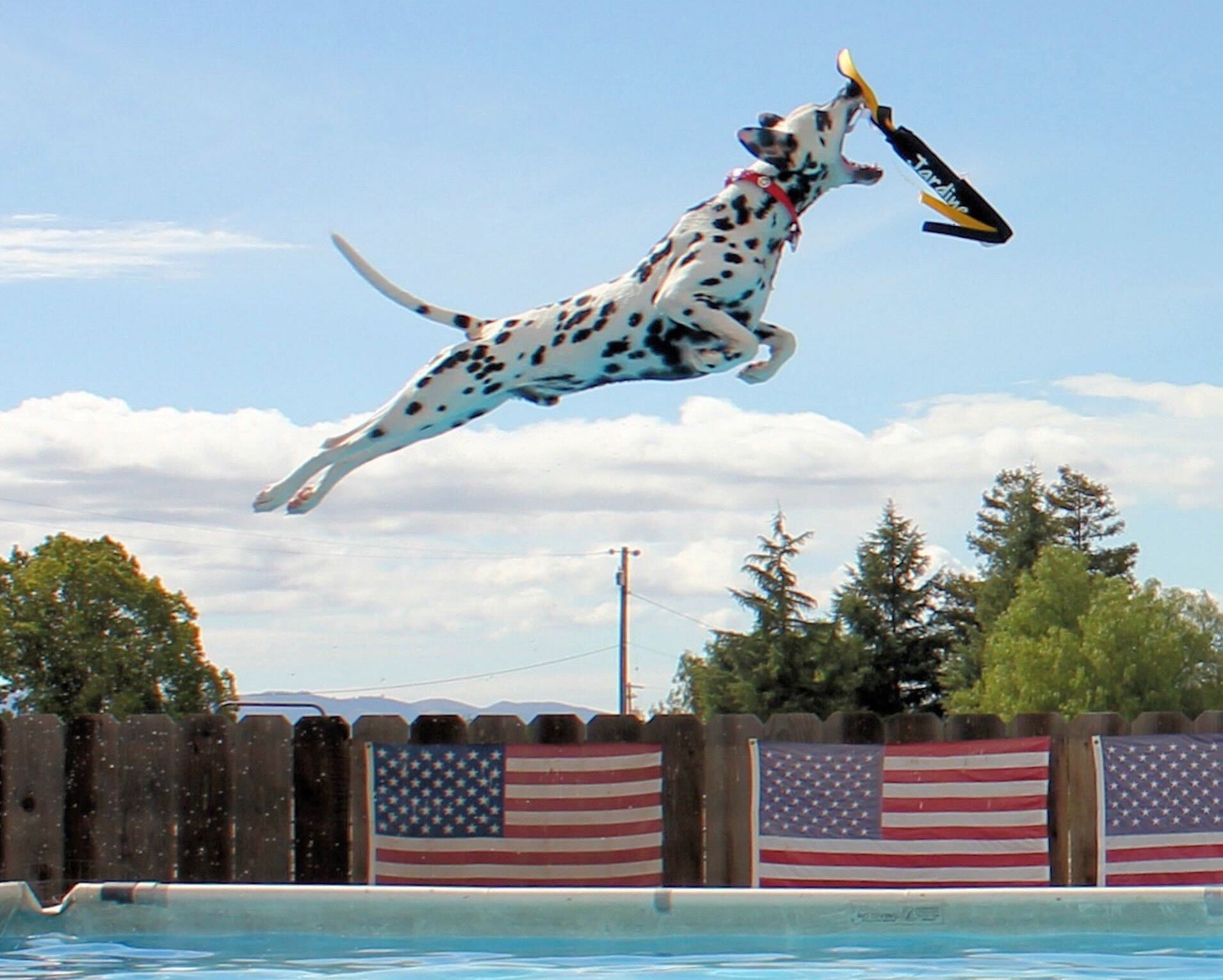
Any dog who is not getting sufficient physical and mental exercise may be prone to anxious or destructive behaviors, and Dalmatians are no exception. It should be said, too, that not all Dalmatians are the same. Isaacson says most of her Dals were quite good at settling down. “They have very good off switches when needed,” Isaacson says, while recounting one Dal that would follow her lead. “If I was going for a horseback ride, he’d be right there on the trail with me, and if I was sitting here watching TV all day, he’d be laying on the couch or laying in my lap. It’s pretty much what you want to do.”
As for the “not great with kids” label, Isaacson says that’s one of the biggest misconceptions about Dalmatians.
“Dalmatians are great with kids if they’re raised with kids,” Isaacson says. “What people don’t understand is that when they were originally bred, they were guard dogs. They were bred to protect the carriages and protect the wagons and the barn, so they get a bad rap as being aggressive and they’re not.”
Socializing puppies with children is a great way to set up dogs and kids for a successful relationship, and there are best practices for introducing the two (check out our guides for introducing dogs and young children safely, and building great kid-dog bonds). A harmonious relationship between dogs and kids involves not only training dogs how to act when they’re around children; it also means teaching children the best ways to behave around dogs. Instruct them on how to pet dogs in the way the dog likes to be pet, and that they shouldn’t force the interaction. Teach kids to avoid food bowls, especially at feeding time. It’s never too early to start showing them how to read dog body language. They may not understand or know how to respect all of a dog’s signals that they are feeling uncomfortable, like licking their lips or growling, but it’s good to start building a foundation. And make sure to supervise any interaction between a dog and a young child.
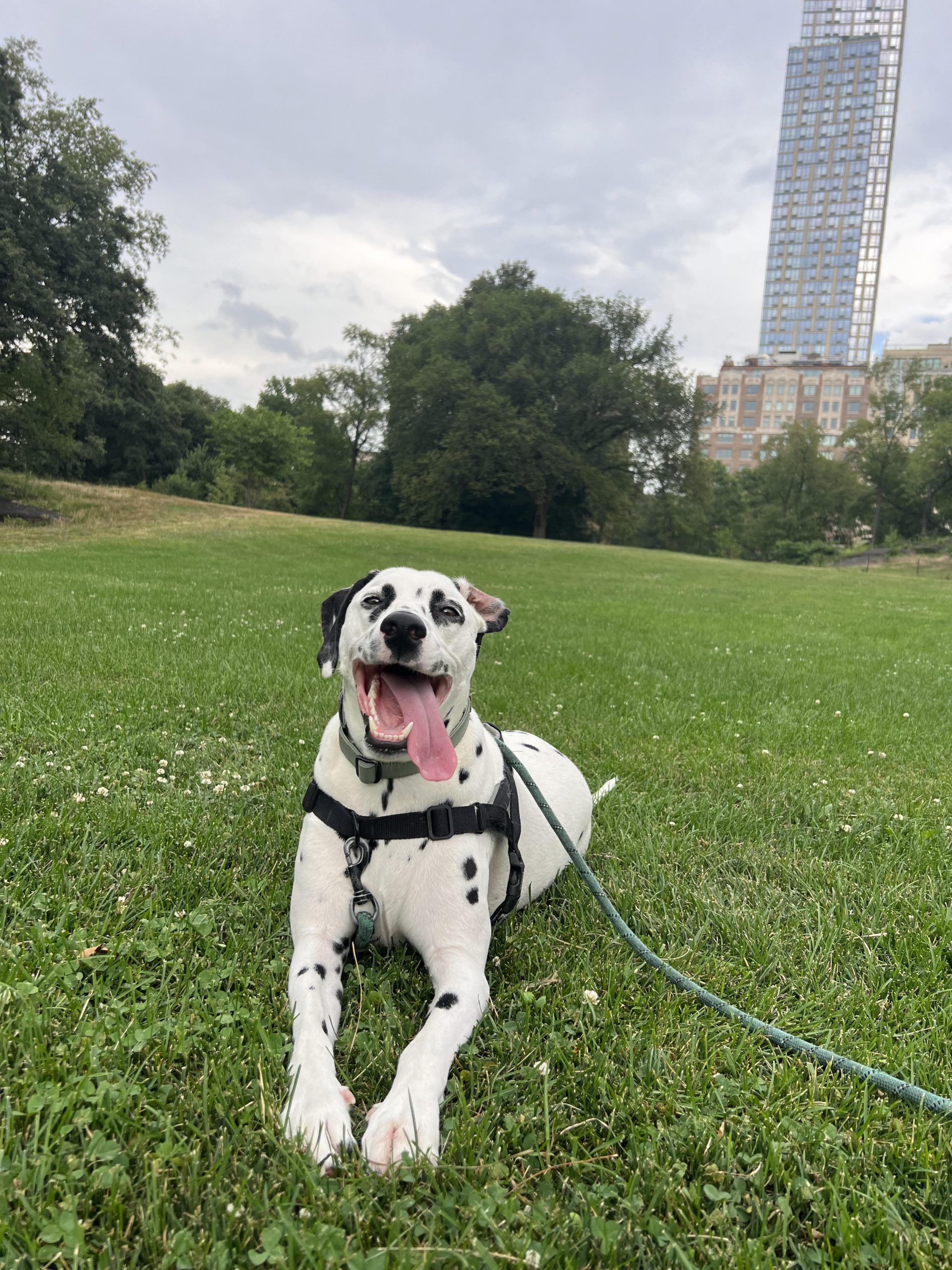
Though they are known for their energy and athleticism, those who love Dals tend to know them as much for their playful, friendly companionship. A word that comes up again and again when speaking with those who have lived with Dalmatians is “loving.”
Diana Robles, whose Dalmatian, Elliot, is 6, says that he “is the most kind, loving, sentimental, clumsy, yet agile, dog I’ve ever had and I’ve had dogs ever since my childhood. He is genuinely jealous of everyone, and has to be the center of attention always.”
Carlee Brignole says her Dal, 5-year-old Louie Sublime, is “very cuddly and loves to give hugs.”
Melissa Smith says of her dog, Shiner, “She is my shadow but she’s not as velcro as other Dalmatians. One of Shiners many nicknames is ‘heat seeker’ because in the winter time she does desire to cuddle with me more.”
“You’ve never been loved until you’ve been loved by a male Dalmatian,” Isaacson says of her Dal, Jardine. “They’re just the kindest, gentlest souls. They’re just so sweet and loving.”
Training, socialization, exercise
Like all dogs, Dalmatians need boundaries, attention, stimulation, and plenty of exercise, and, like most dogs, they can become bored, anxious, and destructive if left alone with too little to do. Training and socialization from the start is especially important to head off any unwanted behaviors and promote a happy, healthy life. It’s a good idea to begin acclimating Dals to people, noises, situations, and other animals upon adoption, and work with a trusted trainer if possible.
Dalmatians tend to be intelligent and athletic, so they benefit from variety in their activities, from different walks to mental stimulation through puzzle toys, and continuous training. They’re often good companions for swimmers, hikers, and runners, but no matter what activity you get them into, know that they love to be with their people.
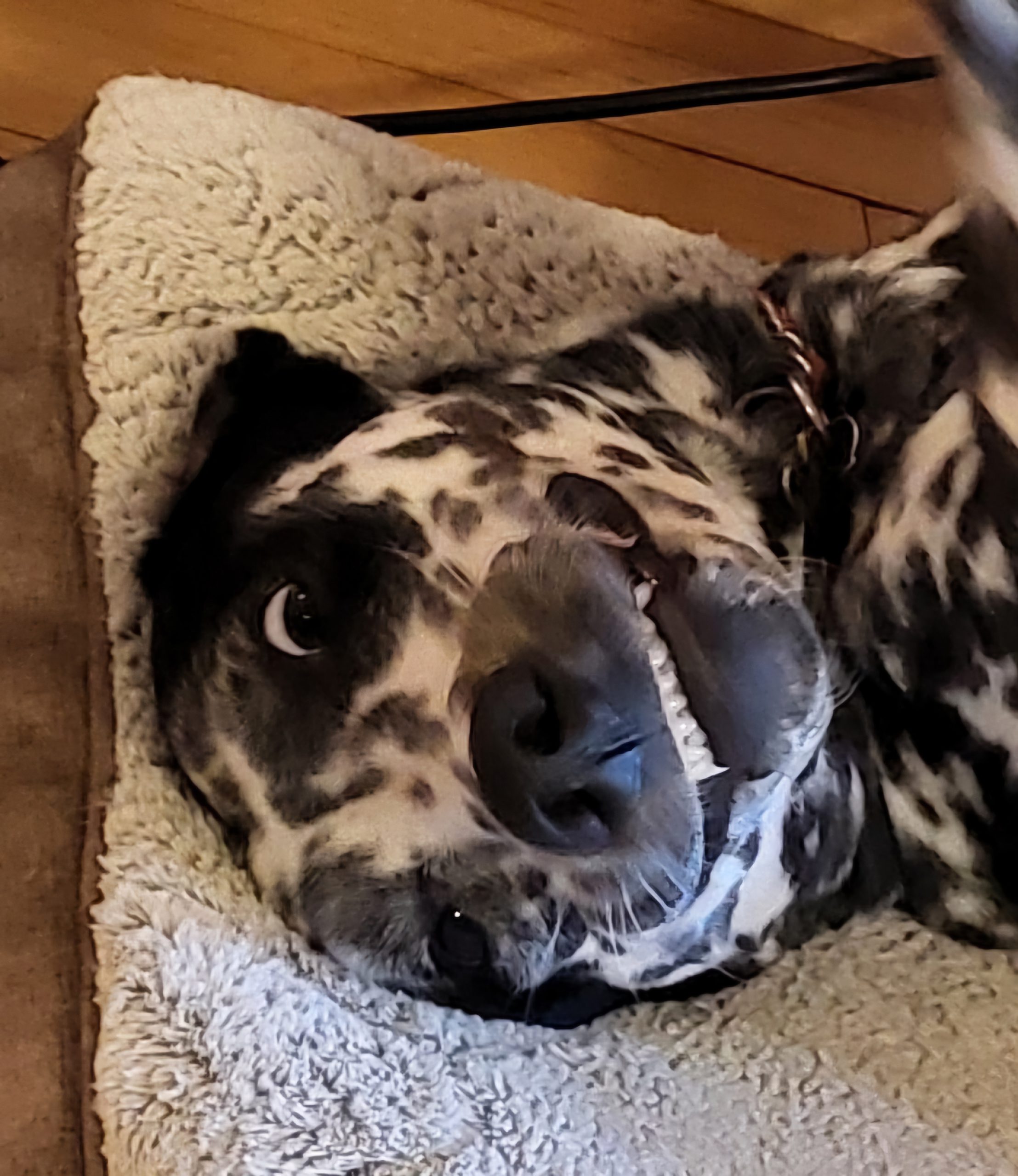
St. John also mentions that Dals can be prone to larynx issues and you shouldn’t walk them with traditional collars, especially if they pull. “They hurt their larynx very easily,” she says. “So we always tell people to use certain types of collars that apply pressure all the way around or a front weight harness.” The collars won’t prevent the issue, but they’ll be gentler on this sensitive area.
Dalmatian grooming
One thing that every Dalmatian caretaker we spoke with said was that these pups shed constantly.
“24/7, six months in the spring, six months in the fall,” is how Isaacson put it. “We call it ‘Dalmatian glitter.’”
St. John jokes that “they have the unique ability to shed black when you wear white and shed white when you wear black. I don’t know how they do it.”
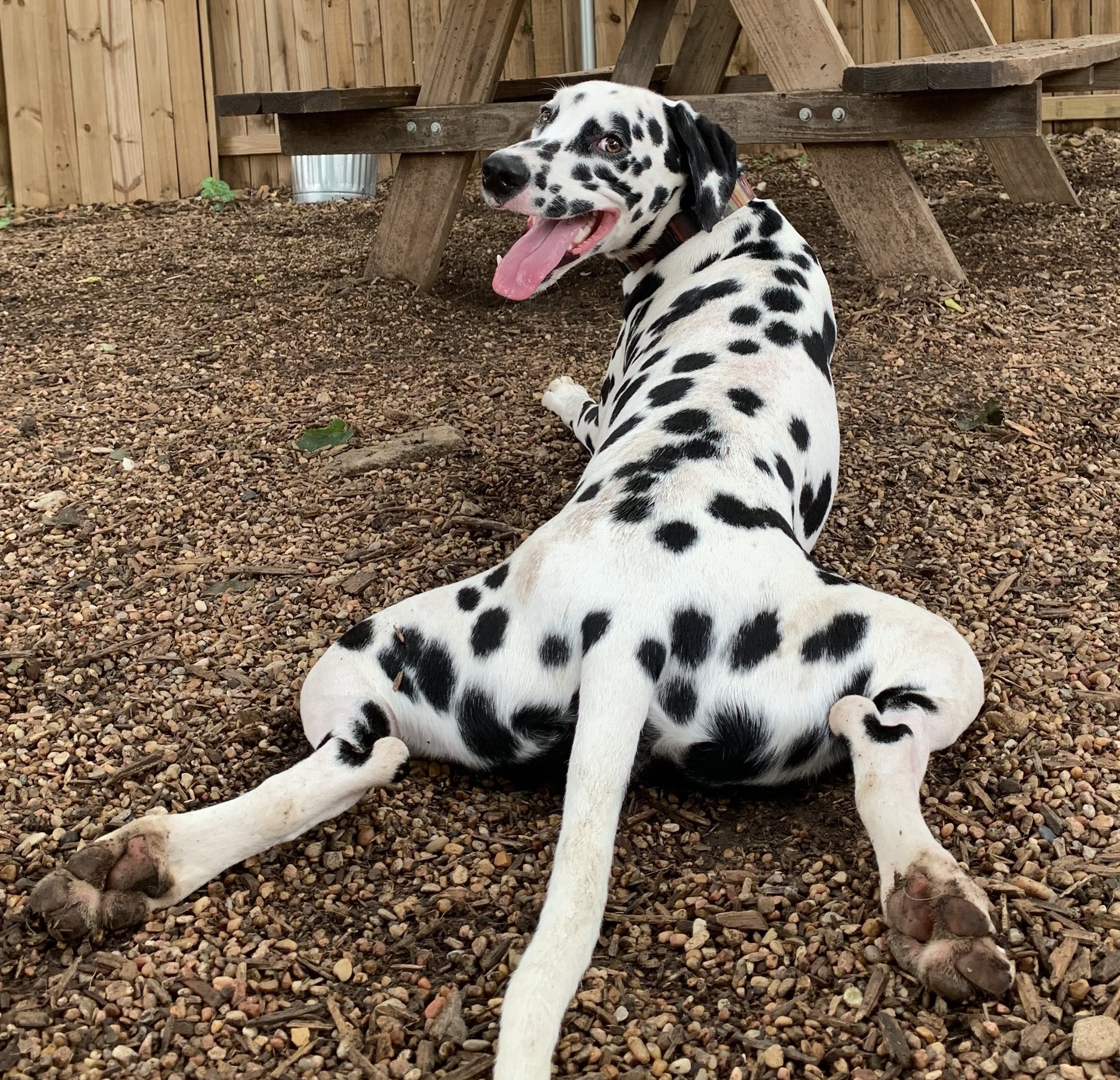
In addition to the year-round shedding, Dalmatians experience a heavier shed twice a year. Brushing once a week can help manage the hair, and you can bathe them once a month (more if they get dirty) to keep the coat in good shape. No matter how diligent you are about upkeep, though, it’s a good idea to invest in the good vacuum to help mitigate the onslaught of Dalmatian glitter.
Common health problems
For all their enthusiasm for exercise and excitable personality, there are a few common health issues that can dull those lovable traits in Dalmatians. Here’s what to look out for when raising a Dal.
Deafness: Dalmatians have a hereditary predisposition to deafness, which generally presents in their first few weeks of life. A simple hearing test can confirm whether a puppy has this condition. Most are deaf in both ears (bilaterally) and fewer are deaf in just one ear (unilaterally). In the UK, recent studies have shown that efforts to breed out the “deaf gene” have yielded some results. A study published in 2020 looked at 26 years of hearing test data in about 9,000 Dalmatians registered with Britain’s Kennel Club and found a significant decrease in deafness. At the start of the study’s data collection, 17.8% of the Dalmatians that were tested were deaf, 13.4% in one ear and 4.4% in both. Bilateral deafness had reduced by a third and unilateral deafness by a quarter.
Bilateral deafness can make these dogs challenging to train, though it’s certainly not impossible. There are plenty of resources and guidance available online (including our article on the topic), but working with a trainer who has experience with deaf dogs is a great idea. Many deaf dogs thrive despite the limitation. It’s probably not, however, a good challenge for beginner dog parents.
Urate stones: Dalmatians carry a common genetic defect that affects how they metabolize uric acid, and are prone to bladder stones made from urate. It’s a good idea to check in with a veterinarian as a new Dal owner, as they can test for the pH in your pup’s urine and suggest how to approach it.
Hydration is also key. Provide abundant fresh water daily, and be sure to wash out the bowl consistently to remove anything other than water that collects there. A fresh food diet contains more natural moisture than dried food, which helps support good hydration. The Farmer’s Dog fresh food is tested for Relative supersaturation (RSS), considered the gold standard for risk assessment of crystal formation (struvite and oxalate) in urine for dogs. If your dog has urinary tract issues, speak to your vet, and have them check out our vet professionals portal for more information and supporting studies.
Dalmatian bronzing syndrome: This one also goes by the charming moniker “Dal crud.” It’s a bacterial folliculitis skin condition that can give their coat a pink or bronze cast, cause hair loss, and create crusty patches. Treatment can range from antibiotics and targeted shampoo to a change in diet. It’s another good one to check in with your vet about.
Hip and elbow dysplasia: Joint dysplasia is common in large dogs, and Dalmatians are no exception. With dysplasia, the ball and socket of the joint don’t fit properly, leading to grating that can feel uncomfortable at best and very painful at worst. Signs that the joint has deteriorated include decreased activity, limping, and avoiding getting up, climbing stairs, or other activities that put stress on the joints. Treatment can range from adding supplements, like glucosamine, to their diet to a total hip replacement surgery. Appropriate exercise, a healthy diet, and weight management are ways to stave off the condition.
Primary Glaucoma: Dalmatians are among the many breeds of dogs prone to primary glaucoma, which is an unhealthy pressure of the eye that develops over time. Signs that Dals have developed glaucoma include keeping that eye closed or avoiding touch around the eye. Some have watery discharge and others have swelling of the eye. This condition can lead to blindness if not treated, so it’s good to get it checked out at the first sign of a problem.
Laryngeal Paralysis: Dalmatians are predisposed to laryngeal paralysis, and it tends to be congenital in the breed. When it’s congenital it will present in their early years, though sometimes the condition can be brought on by leash trauma or tumors, and these latter issues present in their later years. For dogs with laryngeal paralysis, weakness in their throat muscles makes it difficult for the voice box to cover the trachea while eating and for it to open wide when deep breaths are needed. Signs include coughing and wheezing after eating, drinking, and especially after exercise. Sometimes their voice will change. Vets tend to treat the issue with anti-inflammatories and special collars or harnesses. The collars will not prevent the issue, but they are better for the dog’s larynx (consult your vet or trainer for more information on them). Vets may recommend surgery in severe or congenital cases.
Food and nutrition for Dalmatians
Like all dogs, Dalmatians need healthy, complete, and balanced food that’s portioned appropriately. Here are some additional considerations for feeding your bespotted best friend:
Watch their weight:. This large breed’s predisposition to hip dysplasia makes it especially important to keep them lean. A fresh-food plan makes it easy to feed the right amount of food for their age, size, and activity level.
Good dental health is essential: 80% of dogs over three-years-old have periodontal disease. Contrary to popular belief, typical kibble does not help clean teeth. Instead of relying on old myths about food, lean on what works. Introduce daily toothbrushing to help mitigate the chance that your Dal will develop problems with their teeth and gums. Also, learn to recognize the signs of dental disease, like bad breath or bleeding gums, so you can seek treatment immediately on behalf of your pup.
Promote that gorgeous coat: Dalmatians are known for their distinctive coats, and one of the keys to keeping skin and hair healthy is a diet with the right balance of omega-3 fatty acids. The Farmer’s Dog recipes contain salmon oil, which is a source of omega-3 fatty acids, plus amino acids and minerals—and the food is gently cooked to better retain these powerful nutrients.
A fresh, healthy diet—alongside exercise, training, vet care, and allowing plenty of cuddles—is among the keys to giving your Dalmatian a happy and long life.
Where to adopt a Dalmatian
If you’re looking to adopt a Dalmatian or Dalmatian mix, start with a rescue like Save the Dals, which is a national operation, and Willing Hearts Dalmatian which operates primarily in the Northeastern U.S. The Dalmatian Club of America’s foundation also spearheads rescue efforts.
